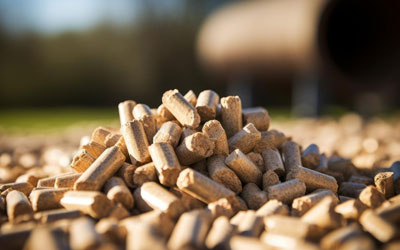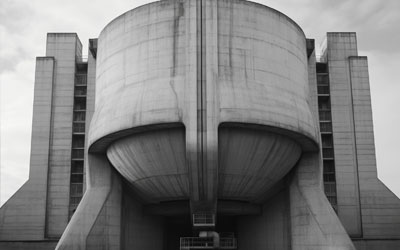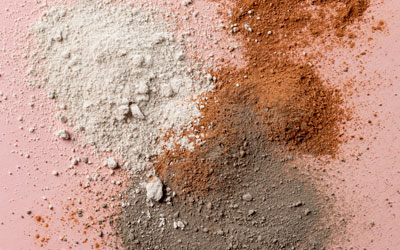Research & Achievements
It is now possible to manufacture cements that do not pollute the environment and thus minimize their current contribution to Global Warming or the Greenhouse Effect.
The key to our approach is to use new technologies, analytical and testing methods that quickly optimize the thermal activation of clays, greatly reducing the CO2 emissions of manufacturing Portland cement (PC).

With which, replaced by said activated clays, not only the efficiency and durability of the structures is improved, but also the mitigation of climate change is greater as the resulting blended cements are more eco-efficient and environmentally friendly than PC and even more so the more they replace it because the quality of the clay matrix is larger.
Clinker & Portland Cement (CP)
Chemical, physical, and mineralogical composition
Behaviour of its pastes in the fresh state (rheological behaviour), recently set and hardened (calorimetric behaviour and, therefore, plastic, thermal and drying shrinkage), and completely hardened state: durability against attack of sulphates, chloride attack, seawater attack, CO2 attack (carbonation) and Alkali-Aggregate Reaction (siliceous or limestone).

Idem, but with different amounts of calcined clays (CC), calcined shales, natural and calcined pozzolans, fly ash, silica fume, ground granulated blast furnace slag (GGBFS), limestone or siliceous fillers and with others natural and artificial SCMs, separately or not. Chemical, physical, and mineralogical composition, Granulometry and Chemical Character.
The Chemical Character of the SCMs, natural and artificial pozzolan type, is given by their hydraulic factors: reactive silica (SiO2r–) (UNE 80225:2012 Standard) and reactive alumina (Al2O3r–) (Talero´s method) contents (%), but, above all, by the latter content (%).
Chemical, physical, mineralogical, and mechanical characterization of new MCSs and recovery of waste for cement manufacturing.
Towards “Greener” Cement

Alternative Fuels
Alternative Fuels usage in Cement; especially BIOMASS.

Silobas Covers
Automated silobas covers for human safety, decreased cycle-time, and reduced dust emissions.

Calcined clay
Calcined clay production for reduction in carbon emissions.
Chemical, physical, mineralogical, and mechanical characterization of CC manufactured in cement Plant, for use in new cements more eco-efficient and environmentally friendly than the current ones. Quality Control.
Low clinker solutions + Low CAPEX + Low OPEX: “Low Carbon Cements” by appropriately replacing PC with CC for each constructive use: optimum setting regulator amount (ground gypsum natural stone type) determination by physical and mechanical methods for each new cement designed and manufactured. Whether conventional, expansive or without shrinkage.
Durability of the new formulated and designed PC-CC cements and their derived products (pastes, mortars, concretes cement and precast concrete) against the aggressive chemical attack of sulphates and chlorides (separately), sea water, CO2 from the air (carbonation) and Alkali-Aggregate Reaction (siliceous or limestone).
Rheological and calorimetric behaviour of PC pastes with natural and artificial pozzolans and/or GGBFS and/or crystalline mineral additions: limestone or siliceous.
NOTE: European (EN) and North American (ASTM) Standards have been considered for the referred experience.


